Over the Bridge - Combat Engineers internationally engaged in Estonia
- The combat engineers in our readiness unit remain well prepared for operating in a multinational combined training exercise. The platoon has undertaken training involving similar types of missions back at home as part of operating in the readiness unit. Especially conscript leaders benefit from this excellent opportunity to hone their skills as leaders of their respective sections. This venue here offers plenty of opportunities for independent decision-making in demanding situations and thereby applying what has been learned, Captain Timo Leppänen from the Kymi Engineer Battalion explains. As a Project Officer in the Karelia Brigade, Captain Leppänen has partaken in planning the ongoing training exercise Saber Strike 18.
Participating in a combined training exercise presupposes long-term advance work and measures from both the personnel and conscripts. Conducting training overseas requires that both transportation and logistics support needs be met alongside sustained interoperability of troops’ training equipment. Comprising conscripts from the Karelia and Pori Brigades, the Finnish detachment has been subordinated under the command of the 1st Infantry Brigade, one of the two Estonian brigades. The training exercise is led by Commander of the 1st Infantry Brigade, Colonel Veiko-Vello Palm. Thereby the Finnish detachment trains alongside service branch connoisseurs from Estonia and the UK.
The training exercise features a salient weekly plan with the first few days consisting of familiarization with the equipment and standardization of tactics, techniques and procedures. Each training unit displayed their given equipment and weapons systems by means of briefings and demonstrations. Also media representatives were welcomed to attend the display and training day to meet the training exercise troops.
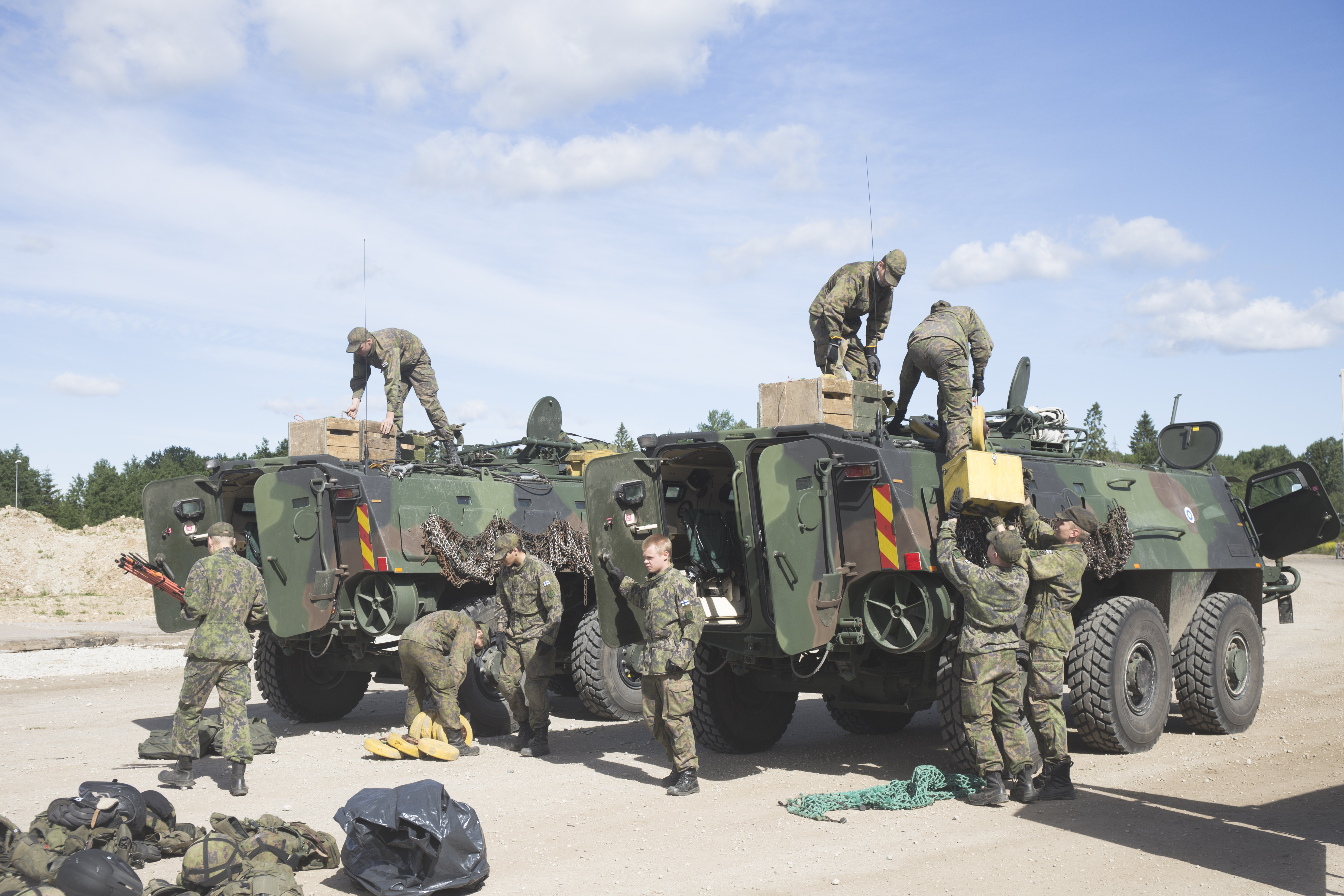
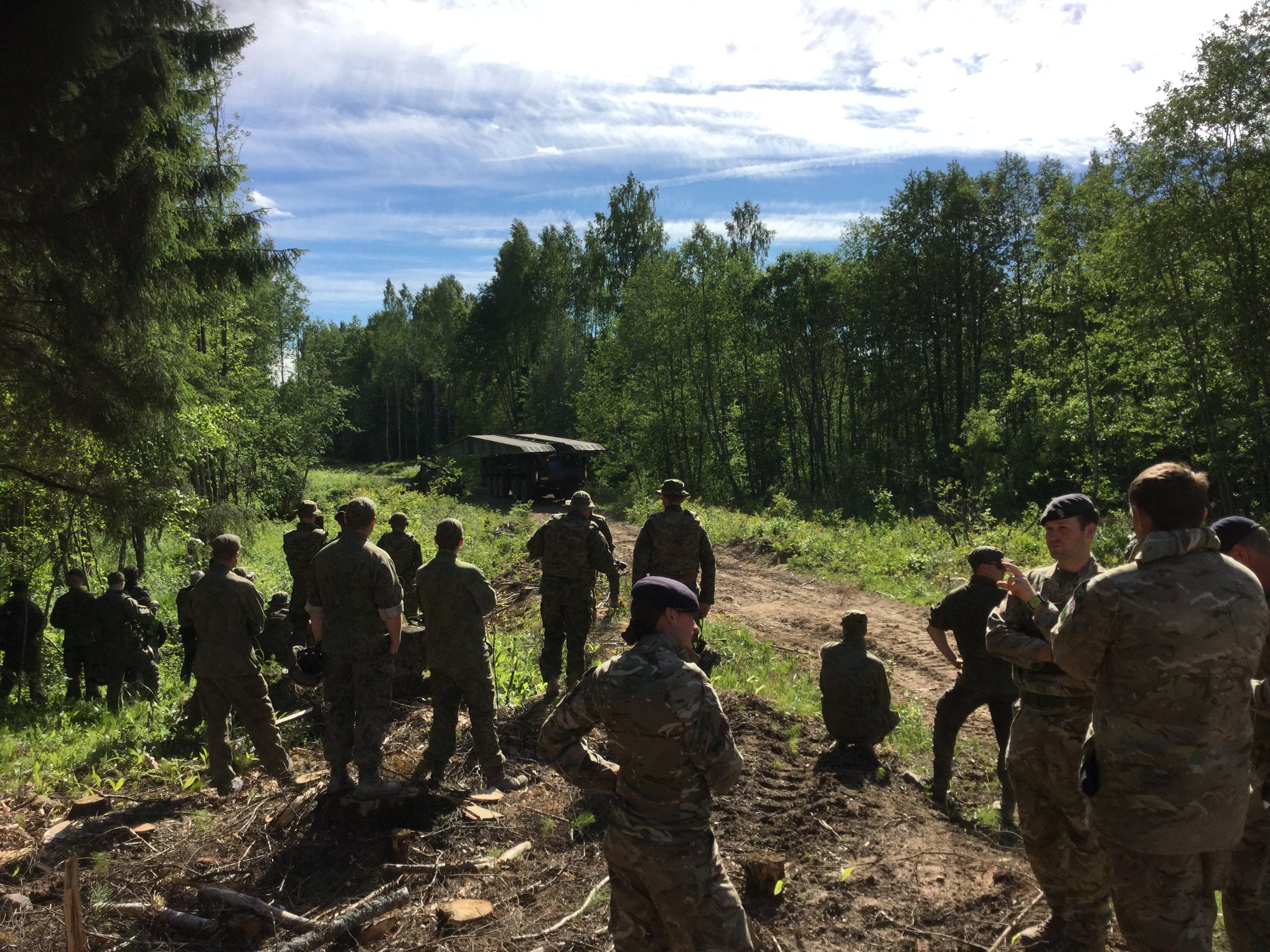
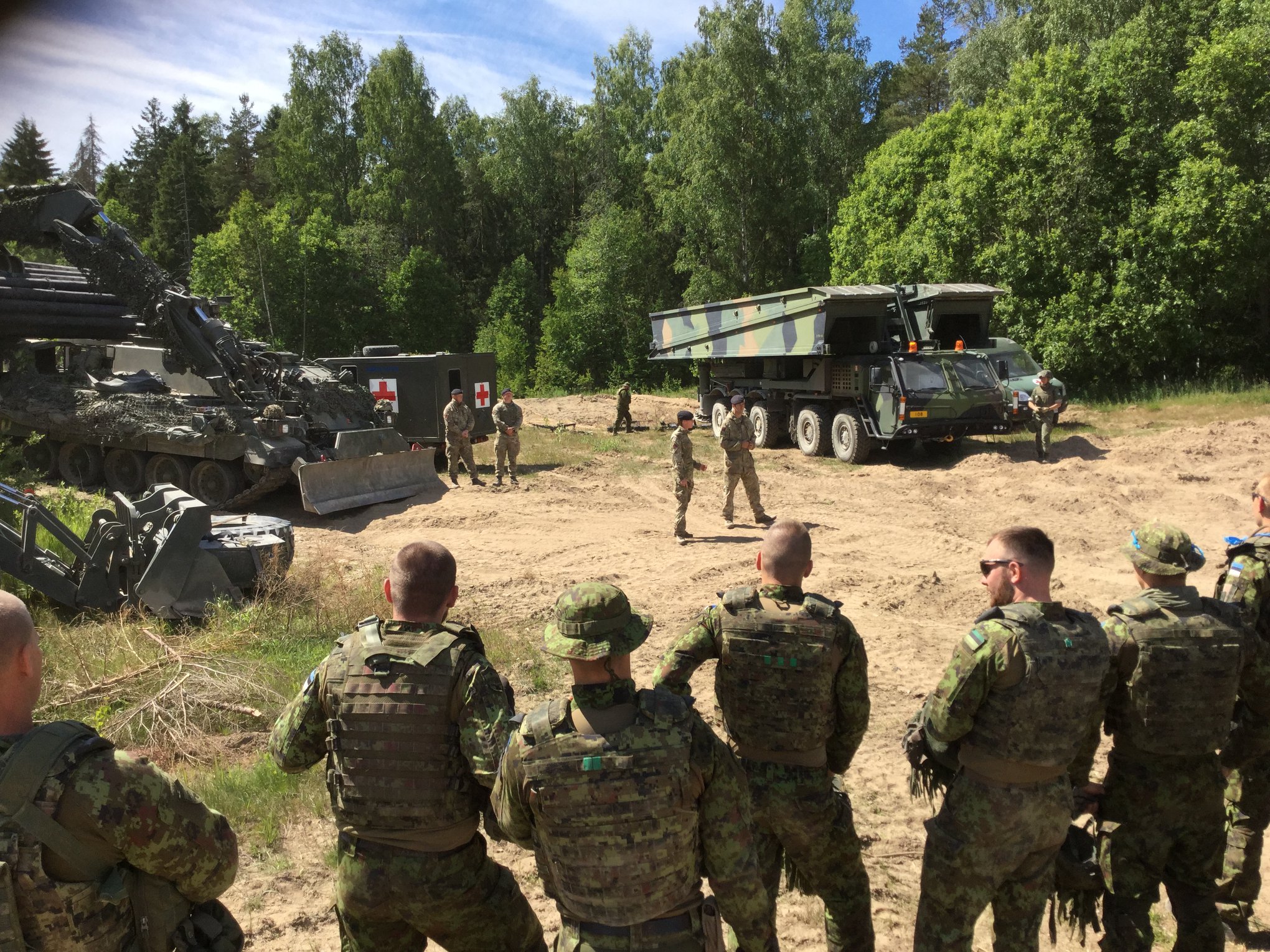
On the days that followed, the combat engineering platoon then got down to the action. After deployment in the training exercise terrain of Tapa, the platoon waited for the first set mission in combat readiness. The combat engineers have consequently been able to utilise their versatile competence in supporting the combat of a mechanised company by conducting, among others, ordnance clearance, counter-mobility measures as well as mobility advancement.
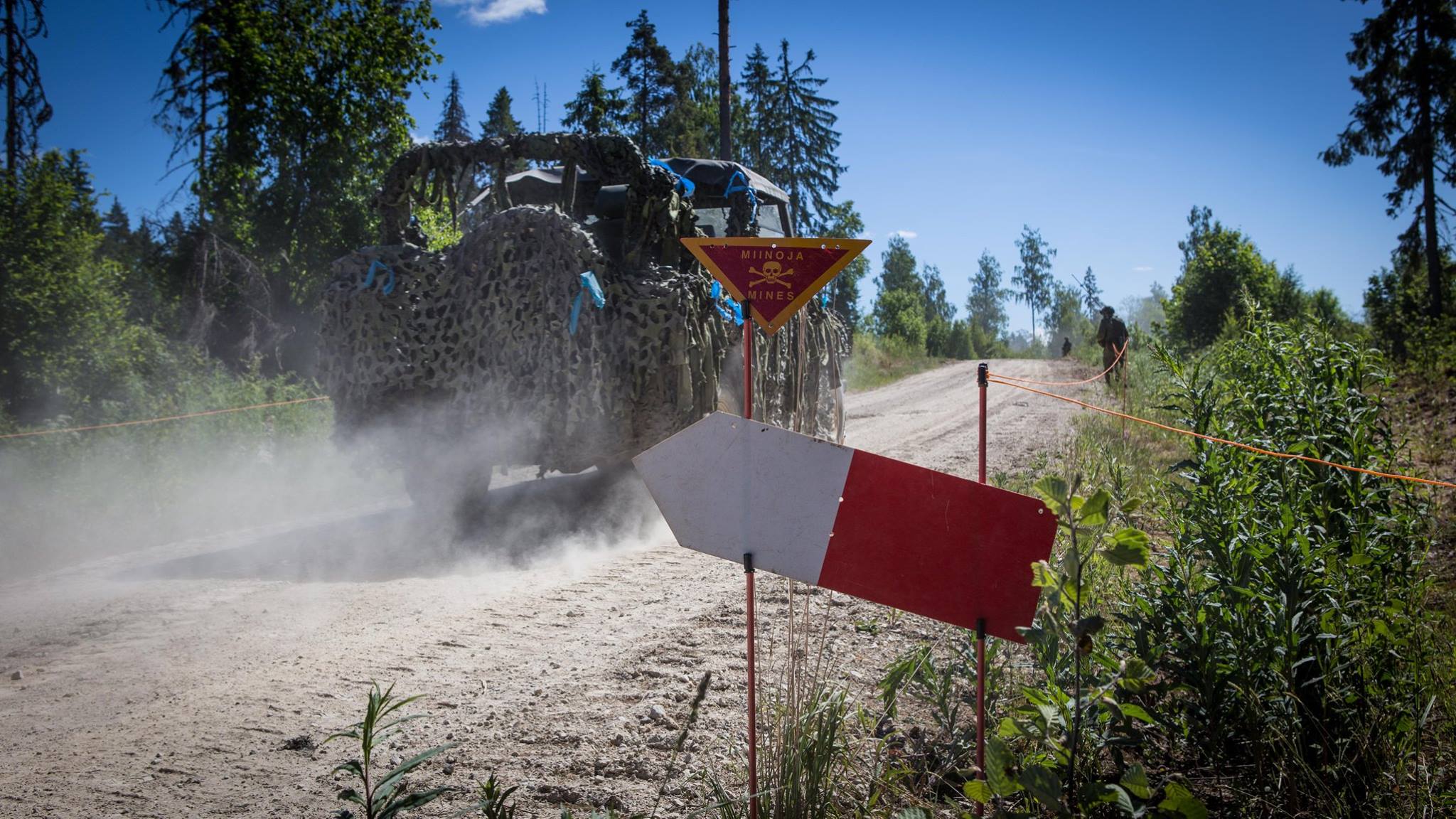
- We have been able to utilise well both our bridge equipment and bridge section as part of this training exercise. The Estonians know our equipment and thus plan optimal missions and locations to suit for our specific capability. Cooperating with the Estonian colleagues remains easy as our two nations share similar solutions-focused and down-to-earth command methods oriented towards getting things done, Captain Leppänen points out.
During the course of one of the training exercise days, Officer Candidate Partanen from the combat engineering platoon instructed the battalion’s soldiers in conducting counter-mobility measures promptly and did so by utilising a terrain box that features a miniature-scale depiction of the given training exercise train. The box carries features denoting the terrain contours, tree-clad areas, and other relevant terrain characteristics. The soldiers from Estonia and the UK paid careful attention to the instruction followed by a demonstration on mine laying set up, after which the troops continued with practice on emplacing mines as part of their own sections.
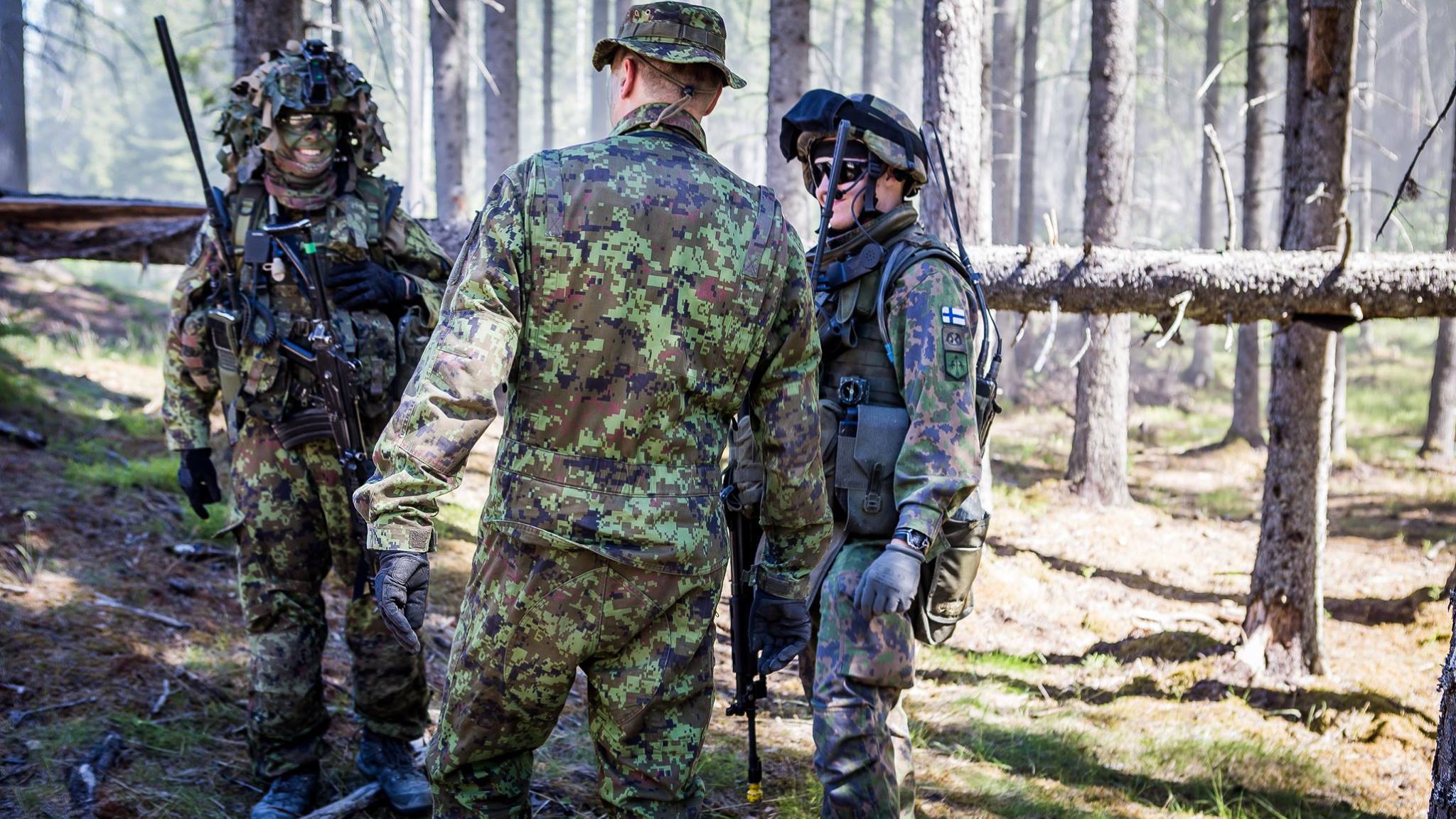
- Actually, they conducted mine laying the same way as we do it, and there were no real differences, really, and they did all this very well. I also think that they were quick enough. Your conscripts are motivated, and I think that they were all great, Sergeant Saarmets from the Estonian Scouts Battalion says and smiles.
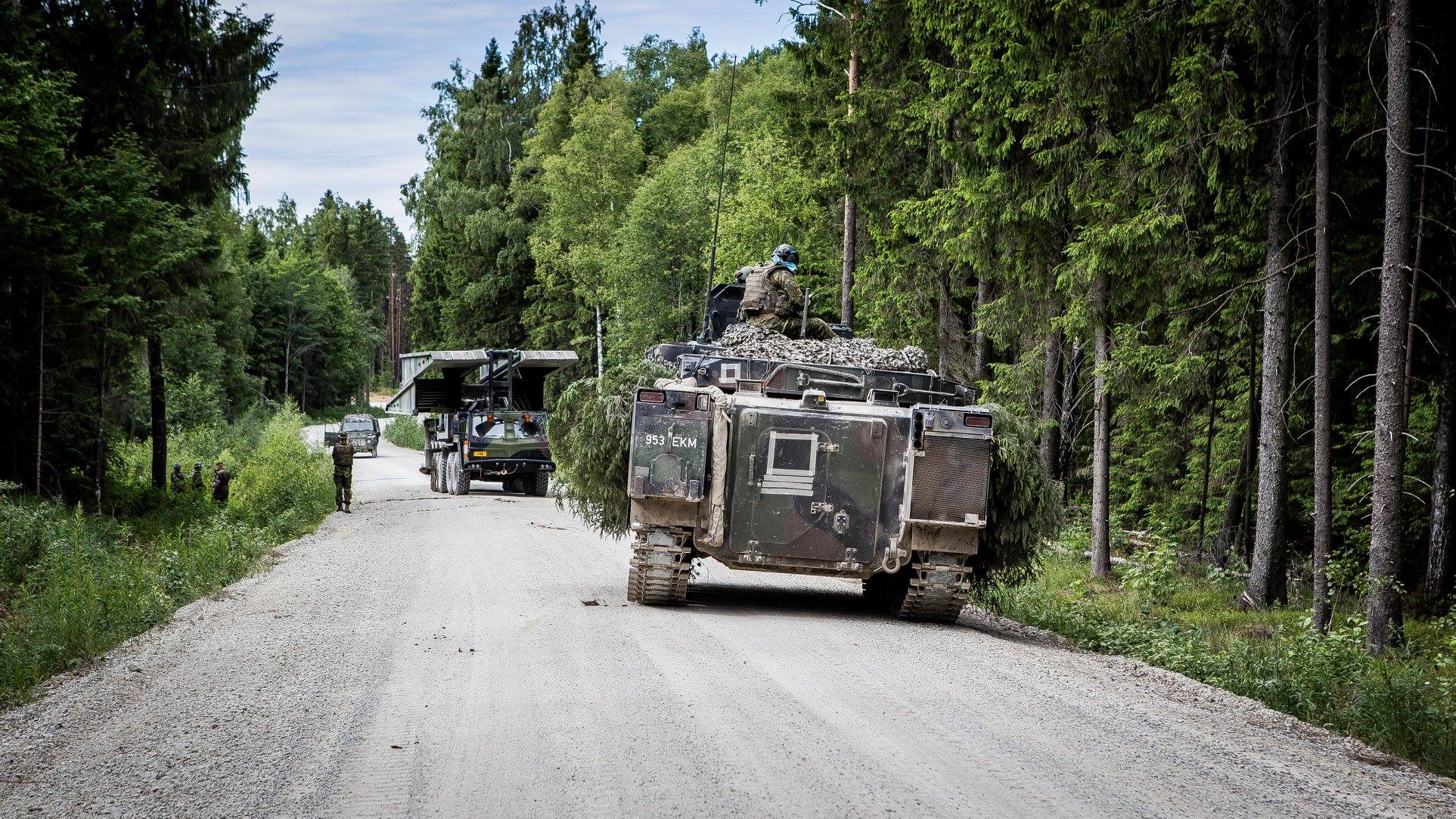
- The conscripts in our readiness unit are well trained for these multinational missions. Obviously, the differences between professional soldiers and conscripts become discernible in the routinely carried out actions, which is only natural. In the daily instructor briefings we cover the training situations together with the local colleagues to exchange views and observations, which in turn allows accruing mutual learning outcomes that will benefit future training, Captain Leppänen explains.
- Everything has gone well with the Finns; I’m pleased with what they’ve done here in this exercise. I think that both of our nations have learned a great deal. Perhaps in some instances it may have become obvious that they are all conscripts but they are doing their part well, 1st Lieutenant Kreitsman from the Estonian Defence Forces says.

- The Finnish conscripts are doing well here because both of our nations (that is, Estonia and Finland) already sustain such high-level basic education in society that we are then able to train skills in military competence with only minor effort. In contrast, there are countries that recruit volunteers who may enlist as they might have difficulties in succeeding in the civilian work force because of their low level of education. The Finnish troops employ quite complicated technologies and still even conscripts are able to operate these technologies on the basis of just a short instruction period. This is why the Estonian Defence Forces is now analyzing how to further develop its own conscript training to make it similarly effective and improved, Exercise Commander, Commander of the 1st Infantry Brigade Colonel Veiko-Vello Palm explains.
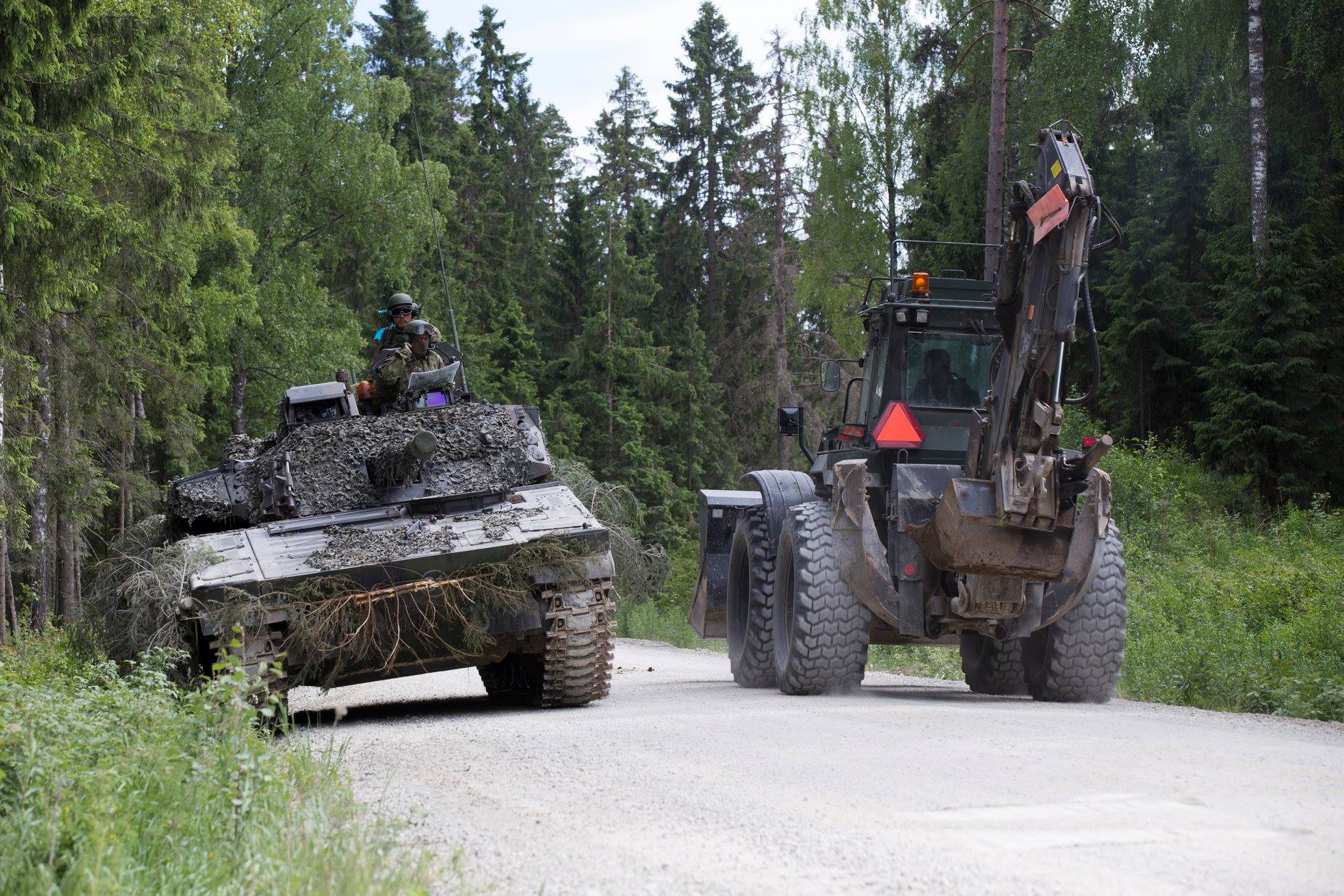
- The 1st Infantry Brigade is the first brigade among those only a few within the NATO structure to have actually taken command of a British battalion and successfully integrated the battalion fully in its own brigade. What the Finns might want to learn from this to take home with is exactly this, in other words, how to subordinate allied units as part of a multinational combined "family", Colonel Palm says.
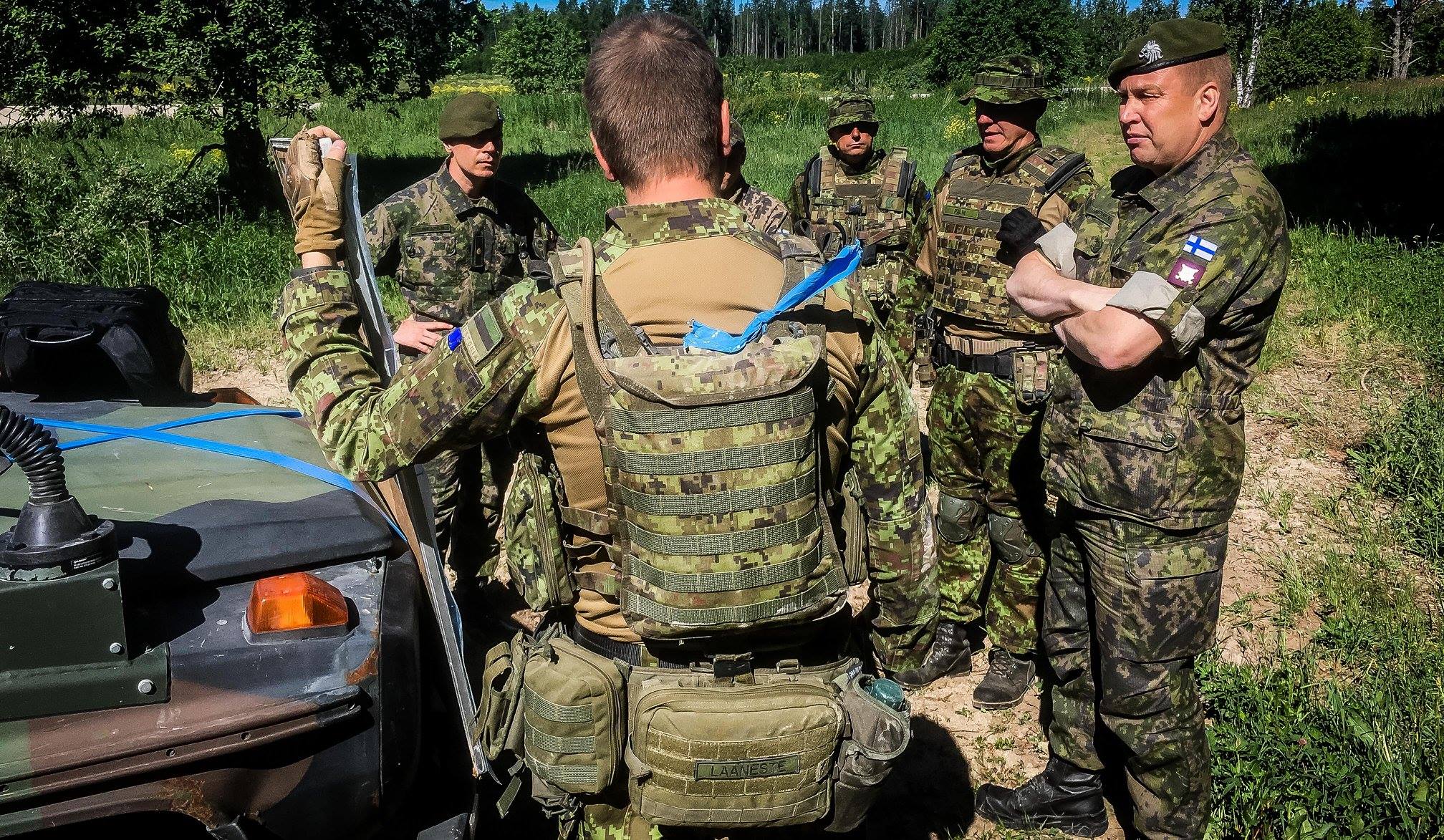
Karjalan prikaatin Kymen pioneeripataljoonan komentaja, majuri Timo Ronkainen (vas.) kävi katsastamassa, kuinka taistelupioneerijoukkue toimii tehtävissään. Kuvassa myös pioneeritarkastaja eversti Matti Lampinen (oik.) ja Viron 1. Jalkaväkiprikaatin komentaja, eversti Veiko-Vello Palm (toinen oik.).
According to Commander of Kymi Engineer Battalion from Karelia Brigade, Major Timo Ronkainen who paid a visit to the training exercise grounds to observe the combat engineering platoon in action, the platoon carried out the set clearance measures well and was also given the chance to conduct machine works, something that is always particularly enjoyable for combat engineers. The bridge equipment in turn ended up safeguarding the crossing over to enable continuing the offensive.
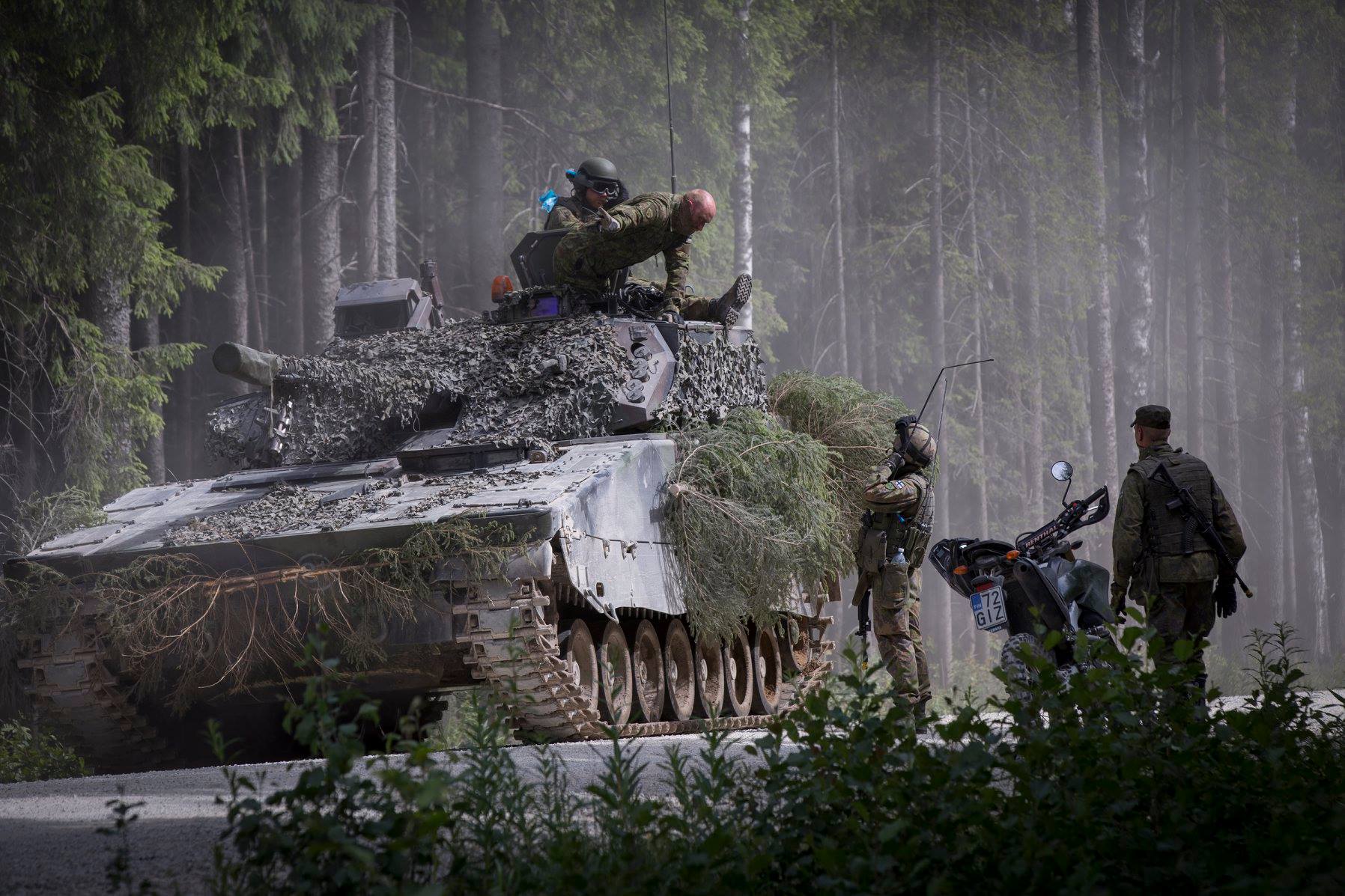
The training exercise involves daily varying thematic focus areas. - These conscripts will be mustering out next week to be part of the Army reserve and, as to be expected at this phase, the troop demonstrates well-rehearsed action, is doing well, and is into doing this. And cooperating with others by using English adds yet another dimension to this, and makes this rewarding for the leaders in particular, Major Ronkainen tells, and continues that he emphasized to the instructors and leaders the importance of observing versatile procedures that may turn out to be useful for us and similarly tell cooperation partners about our ways of doing things.
Photo of Ronkainen, Palm and Lampinen
- Self-evidently, in-service safety procedures feature nation-dependent differences, some of which have already surfaced while engaged in training. We always operate by sustaining in-service safety first and foremost, and when the national differences in regulations ask for adjustment, we act accordingly. For instance, when a British vehicle crosses over a bridge, the vehicle must always be escorted by over-watch guides whereas ours does not. Now, this means that we come up with a working solution, and then cross over the bridge, Major Ronkainen continues.
- Overall, this training exercise offers the Karelia Brigade beneficial lessons in transportation and projection of troops, motorised marches as well as training exercise planning, Major Ronkainen continues.



